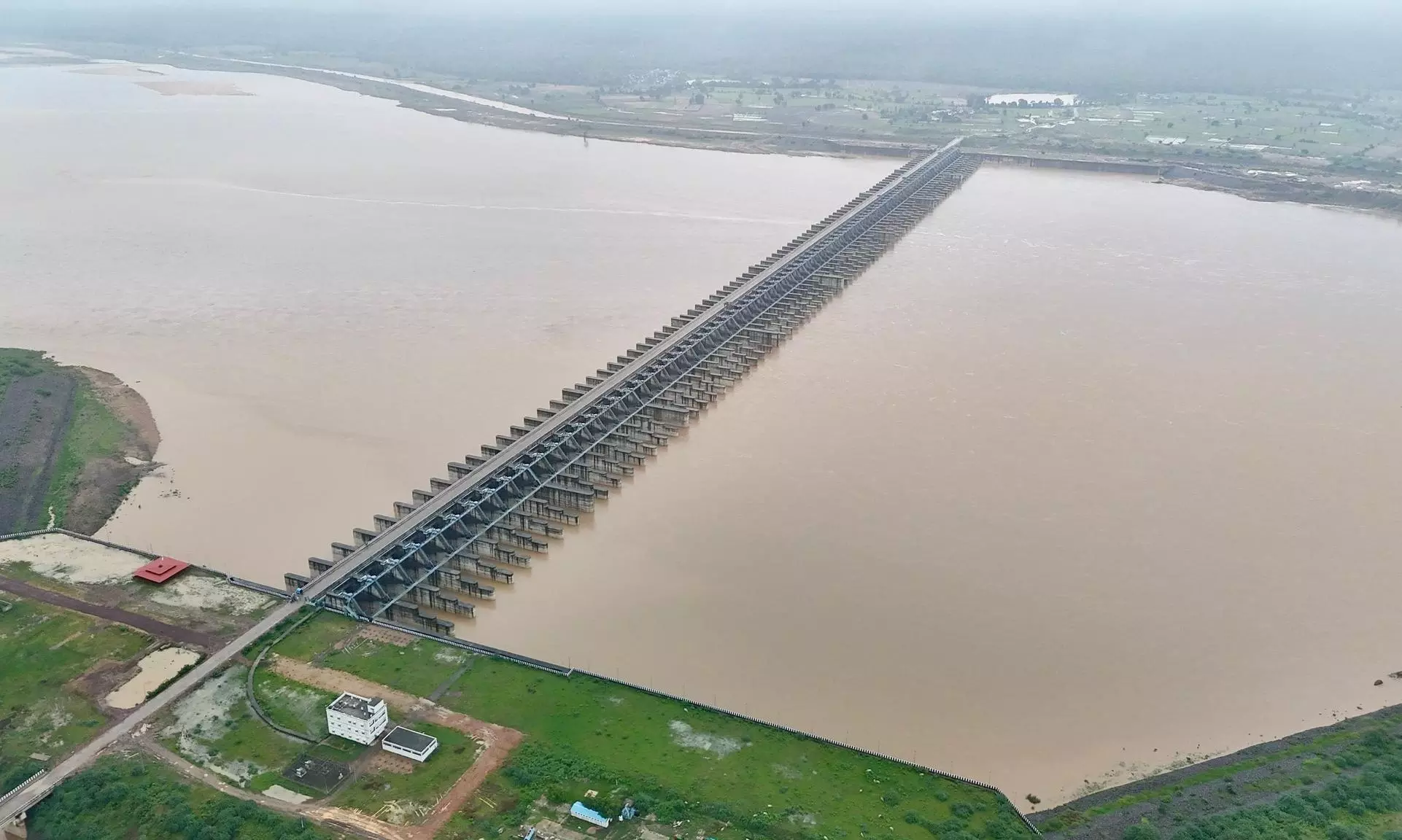NDSA Report: Medigadda Barrage Block Beyond Repair
NDSA’s report confirms Medigadda barrage’s Block 7 must be rebuilt due to faulty design, poor planning, and improper water storage

Hyderabad: The final report from the National Dam Safety Authority (NDSA) is learnt to have made it clear that the damaged Block 7 of Medigadda barrage was not in a state where it could be repaired, or restored. The primary option to have the barrage back into shape will be to rebuild the stricken block, the report is learnt to have concluded.
It is learnt to have concluded that the partial collapse of the Medigadda barrage of the Kaleshwaram lift irrigation scheme, as well as problems at its sister barrages at Annaram and Sundilla, resulted from poor planning, faulty design, and the abuse of the structures for storing water despite the fact that they were not to be used as dams to store water.
The report is expected to be sent by the NDSA to the state government in the next few days. The government has been waiting for it before taking any action on the way forward with the barrages and their repairs.
Sources said that the NDSA also noted that repairs to the three barrages – in the form of grouting the voids that were formed due to the stored water forcing its way from under their foundations – were taken up without its approval.
This observation follows NDSA’s communications to the irrigation department pointing out that these ‘repairs’ interfered with the results of geological and geophysical tests it prescribed at the barrages to determine the extent of the damages, and how any investigation report post repairs, interferes with recommendations for permanent solutions for the problems as the original damaged conditions ended up being modified.
It may be recalled that the previous BRS government had claimed great pride for taking up and completing the KLIS project and particularly its barrages with the then chief minister K. Chandrashekar Rao declaring that Godavari, on which the barrages are built, had turned into a ‘live’ river.
To ensure that a nearly 150 km stretch of the river stayed full round the year, the then government had decided to keep the barrages full. Since the structures were not designed to function as dams, the pressure from stored water was found to be one of the reasons for the foundations springing leaks, in addition to poor designs of the downstream discharge protection measures.
The NDSA report is learnt to have recommended redesign and reconstruction of the downstream portions of the barrages including the stilling basin – the portion where the shooting velocities of water released after lifting the barrage gates is supposed to slow down.
However, even during the initial inspections soon after the October 2023 sinking of Block 7 of the Medigadda barrage, the NDSA had found that the shooting velocities of water exiting the gates far exceeded the designed capacities of this, and the other two barrages.
The report is also learnt to have made it clear that near absence of maintenance at the barrages, as a consequence of them never being emptied, was a major contributor to the damages.
